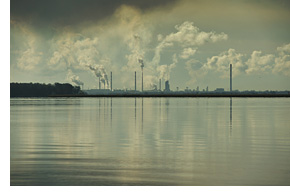News
SPIRAL "UK National Ecosystem Assessment" paper publshed
A new paper has been published based on work carried for SPIRAL, authored by Kerry Waylen and Juliette Young. This paper focuses on the first phase of the UK National Ecosystem Assessment.
Upcoming Event
No upcoming events.
Mixed success for European environmental policies
 European environmental policies have enabled some progress towards a sustainable green economy, according to a recent report from the European Environment Agency. The report identifies the progress made against a suite of environmental indicators set by the European Environment Agency which show that policies to encourage resource efficiency have been moderately successful. However, policies designed to improve ecosystem resilience have met with less success, potentially due to the longer timescales required to see progress in this area. The report concludes that Europe needs new policies and objectives that recognise the links between resource efficiency and ecosystem resilience if it is to move to a sustainable green economy.
European environmental policies have enabled some progress towards a sustainable green economy, according to a recent report from the European Environment Agency. The report identifies the progress made against a suite of environmental indicators set by the European Environment Agency which show that policies to encourage resource efficiency have been moderately successful. However, policies designed to improve ecosystem resilience have met with less success, potentially due to the longer timescales required to see progress in this area. The report concludes that Europe needs new policies and objectives that recognise the links between resource efficiency and ecosystem resilience if it is to move to a sustainable green economy.
 The EU is seeking to transition to a green economy: that is, an economy in which environmental, economic and social policies and innovation enable society to use resources efficiently, while maintaining the natural systems that sustain us1. Thus, both resource efficiency and ecosystem resilience lie at the heart of such an economic system, alongside human health and well-being.
The EU is seeking to transition to a green economy: that is, an economy in which environmental, economic and social policies and innovation enable society to use resources efficiently, while maintaining the natural systems that sustain us1. Thus, both resource efficiency and ecosystem resilience lie at the heart of such an economic system, alongside human health and well-being.
To measure progress towards the green economy, the Environmental Indicators Report 2012 presented a suite of environmental indicators in six areas: nitrogen emissions and threats to biodiversity; carbon emissions and climate change; air pollution and air quality; marine activities and the marine environment; water use and water stress, and; use of material resources and waste management. Each chapter also included indicators focused on a particular sector, showing the trends in that sector and how these meet the European ambition of transitioning to a green economy.
Overall, the indicators suggest that environmental policies in Europe are helping towards improving resource use efficiency. For instance, reducing greenhouse gas emissions is an important element of resource efficiency. In Europe, domestic greenhouse gas emissions fell by over 15 % between 1990 and 2010, due also to improvements in energy and fuel efficiency. Indicators also suggest resource use in Europe is increasingly decoupled from economic growth and recycling rates are increasing, although overall progress appears mixed and there are differences between the Member States.
However, ecosystem resilience indicators show a less encouraging trend, implying that policies to improve ecosystem resilience have been less successful. For example, the EU target ‘to reverse negative species abundance trends’ in the marine environment is not being met. Although marine protected areas are being established, they cover a small area of EU waters (just four per cent) and there is no connected network of offshore protected areas. Also, the EU is not currently on track to improve air quality to the point where it does not affect people’s health, although the indicators show that air quality is not getting worse.
The report suggests several reasons for the differing success rates between the two aspects. Firstly, the relationships and policies which affect resource efficiency are generally more direct than the complex intertwined factors affecting ecosystem resilience. Secondly, resource efficiency can be improved over a relatively short timescale, whereas improvements to ecosystems can take decades, so the short timescale covered by the report may favour resource efficiency progress. To support the transition to a green economy, the report concludes that EU policy objectives should explicitly address the links between resource efficiency and ecosystem resilience, and that these polices should be linked to human well-being progress. The report also notes that the existing indicators provide a basic framework for assessing progress towards improving resource efficiency and ecosystem services, although more indicators are needed to address interconnected environmental challenges.
Source: European Environment Agency (2012). Environmental Indicators Report 2012. Doi:10.2800/4874.




